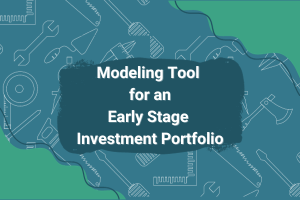Note: This article is the last in an ongoing series on valuation and capitalization. To learn more about the financial mechanics of early stage investing, download this free eBook today Angel Investing by the Numbers: Valuation, Capitalization, Portfolio Construction and Startup Economics or purchase our books at Amazon.com.
 One of the biggest challenges faced by early stage investors is to assemble a portfolio of investments that in aggregate return more than 2 times the original amount invested in the total portfolio. In the language of Venture Capital, the goal of a successful early stage investor is to achieve a Distributed to Paid-In (DPI) ratio greater than 2X. In other words, for every dollar you invest in your portfolio, you want to get two dollars back over time. And, if you want to be one of the top decile early stage investors, you want to shoot for a DPI of 3X or greater.
One of the biggest challenges faced by early stage investors is to assemble a portfolio of investments that in aggregate return more than 2 times the original amount invested in the total portfolio. In the language of Venture Capital, the goal of a successful early stage investor is to achieve a Distributed to Paid-In (DPI) ratio greater than 2X. In other words, for every dollar you invest in your portfolio, you want to get two dollars back over time. And, if you want to be one of the top decile early stage investors, you want to shoot for a DPI of 3X or greater.
As we discussed in a previous article, a successful early stage investment portfolio has a mix of strikeouts, base hits and home runs. So how is it possible for an early stage investor to build a successful portfolio compiled from companies that produce such widely different financial returns? To answer that question, we pulled together a simple modeling tool that helps you visualize how the probable returns play out and interact to produce an overall portfolio return. As usual, we built it as a Google Sheet that allows you to make a copy and model a number of scenarios for your own portfolio.
Download the Early Stage Portfolio Modeling Tool >>
How do you go about using this modeling tool? To start, we created a sample portfolio of 15 companies for you to work from. That’s enough companies to begin with for a basic portfolio modeling exercise. For each company, there are two variables that you need to set.
-
First, you will need to put in an amount that you invest in each company. In a portfolio of 15 companies, you might have the same amount invested in each company. Or, you might decide to distribute your investments in a less even fashion. In the default Google Sheet, we’ve set up a range of investment amounts. Some companies have as little as $15,000 invested and others have as much as $50,000.
-
Second, you will need to chose or “model” the type of exit for each company in the portfolio. Here is where you determine the multiple of capital each company will return to your portfolio. Since we are dealing with early stage companies, you will have a real mix of returns. If you want a realistic model that will be predictive of probable real-life outcomes, we recommend that you set approximately half the portfolio to total losses (i.e. no capital returned). The rest of the portfolio can be a mix of moderate successes with maybe one or two bigger wins.
There is one other variable that you can control on this sheet. In the upper right quadrant of the sheet is a section for the Exit Multiple for each type of exit. We provide values for each exit type, but you might want to model using different exit multiples. So feel free to change these numbers to fit your needs.
Once you set the two variables for each company (and make any changes to the Exit Multiples), take a look in the upper left quadrant of the Google Sheet. There are three important metrics that are calculated for you in that section.
-
Total Amount Invested: This is the sum of all the investments you made in the portfolio and lists the total.
-
Amount of Capital Returned: This is the sum of all the returned capital based on the types of exits you set for each company.
-
Distributed to Paid-In (DPI) Capital Ratio: This represents the multiple of capital your portfolio returns. Remember, a solid DPI is 2 and a top quartile investor will have a DPI of 3 or greater.
So, as we discuss above, a DPI of 2X is a good target to aim for. And 3X is even better and puts you in league with the best VCs.
One final thought to keep in mind. This tool is helpful to determine your overall multiple of returned capital. However, it does not factor in the amount of time it took for this capital to be returned. As you are building your own early stage portfolio, make sure you watch out for how long it takes to get a return on your capital. If your returns take significantly more than 10 years to appear, your resulting IRR returns will be much less than optimal. You won’t earn enough for the risk you are taking and you might be better off investing in the public stock markets!
Download the Early Stage Portfolio Modeling Tool >>
Want to learn more about the financial mechanics of early stage investing? Download this free eBook today Angel Investing by the Numbers: Valuation, Capitalization, Portfolio Construction and Startup Economics or purchase our books at Amazon.com.

